By Umar Nsubuga
As one approaches Fort Portal city, one thing that stands out is the vast tea plantations. However, after a 65km drive through tea plantations, one is welcomed by Kamata Farm Enterprises.
It belongs to Phoebe Kagambe Kusiima, 41, a mother of triplets. Her farm is located in Rwentale-Kamata village, Kigoyera Parish, Kyarusozi sub-county Kyenjojo district.
Kagambe’s focus of establishing the farm was to improve the livelihood of the community through sustainable agricultural practices and entrepreneurship. She is helping change the mindset of the youth in the community by showing them that one can be successful, regardless of age. Kamata farm has provided better returns for the community in order to improve their standard of living.
There are over five enterprises; the dairy cattle, improved goats, coffee, vanilla, maize, cocoa, rosemary, Napier grass and bananas. The enterprises were carefully selected and generally complement one another. The farm sits on 138 acres of land.
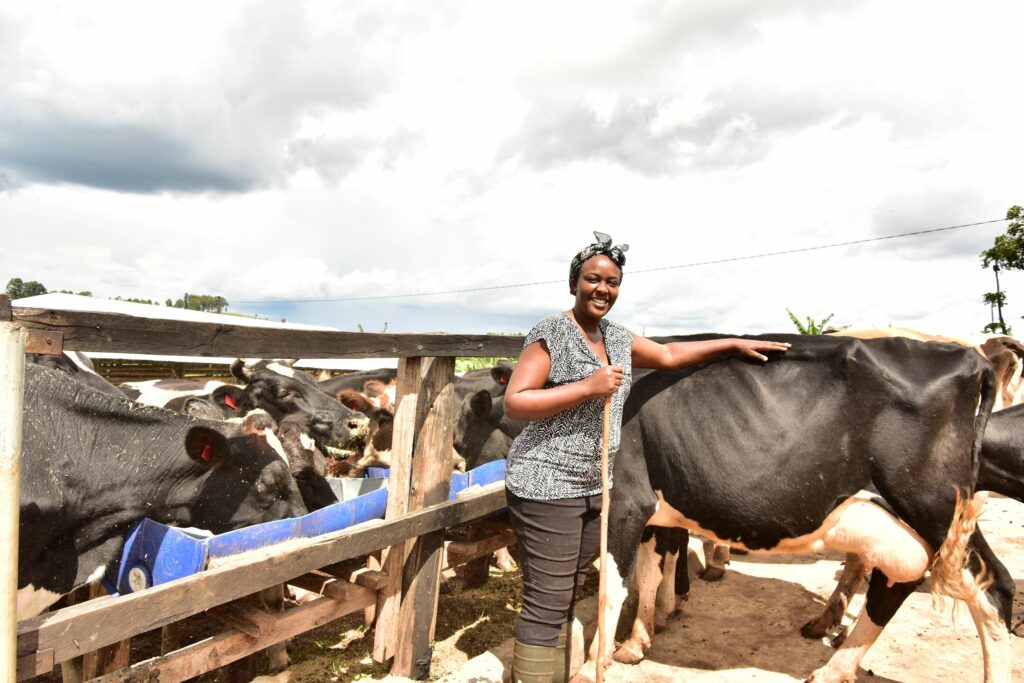
How she started
To set upm the farm Kagambe needed resources. Her husband, Professor Dr. Edmond Kagambe, came to her rescue by giving her 50acres of land. Kagambe quit her job in 2000, she was working with Kyebambe girls’ secondary school as a school counsellor.
“People always ask me how I could leave such a ‘big’ job for the farm and the answer I give is that I wanted something I could depend on without having to wait for a pay cheque.
“Right from the first day, I knew it was hard to be successful without a farm business plan. The plan in place has helped the family to stay true to its vision and the mission of the operation, she says.
Kagambe’s main enterprise is milk because it is daily. She owns 74 Holstein Friesian dairy cows, 240 South African Savannah breed goats, 10 acres of banana, 24 acres of coffee, 10 acres of cocoa, 10 acres of maize, 10 acres of Napier grass, and 2 acres of vanilla.
“My husband gave me enough support because I was determined. He gave me sh10m for the start, a year later, I had started to see where I was going, I used the money to get good breeds of goats and dairy cows I was also trying to set the garden,” she explains.
Dairy farming practice
Kagambe says she has the opportunity to add value to her product by adopting methods of production that satisfy the demands of processors and customers.
She has clearly defined the minimum quality requirements for the dairy farm practices among animal health.
“All cows that produce milk at my farm are healthy and an effective health care programme is in place. I choose the right breeds to suit the local environment and farming system of Kyenjojo. Determining herd size and stocking rate was based on the management skills, local conditions and the availability of my land, infrastructure, and feed”, she said.
Regular vaccinating all animals is a recommended practice, Kagambe says I take this seriously because infectious diseases threaten dairy cow health and can decrease productivity and profitability.
Kagambe uses an identification system (plastic ear tag or electronic- radio frequency identification system technology ear tag, this allows all my animals to be identified individually from birth to death.
I always attend to sick or injured cows quickly in an appropriate way. This helps me to minimise unnecessary treatment expenses and prevent me from losses.
“Sick cows can be identified in several ways, the most popular is rectal temperature and visual indications”, she says.
According to Kagambe she keeps sick animals in an isolation paddock, separate milk, and keeps written records of all treatments, and identify treated animals appropriately.
She uses only chemicals and veterinary medicines as directed, and that approved for supply and use under relevant legislation.
Milking hygiene
Kagambe says all times her milk at the farm is harvested and stored under hygiene conditions, equipment like milk buckets used to harvest are stored in suitable and well-maintained rooms.
“I always make sure that milking routines do not injure the animals or introduce contaminants into milk. I always identify individual animals that require special milking management, I make sure that a sufficient supply of clean water ensures milking equipment is correctly installed and maintained”, she explains.
She says she always makes sure that milk storage equipment is adequate to hold milk at the specified temperature.
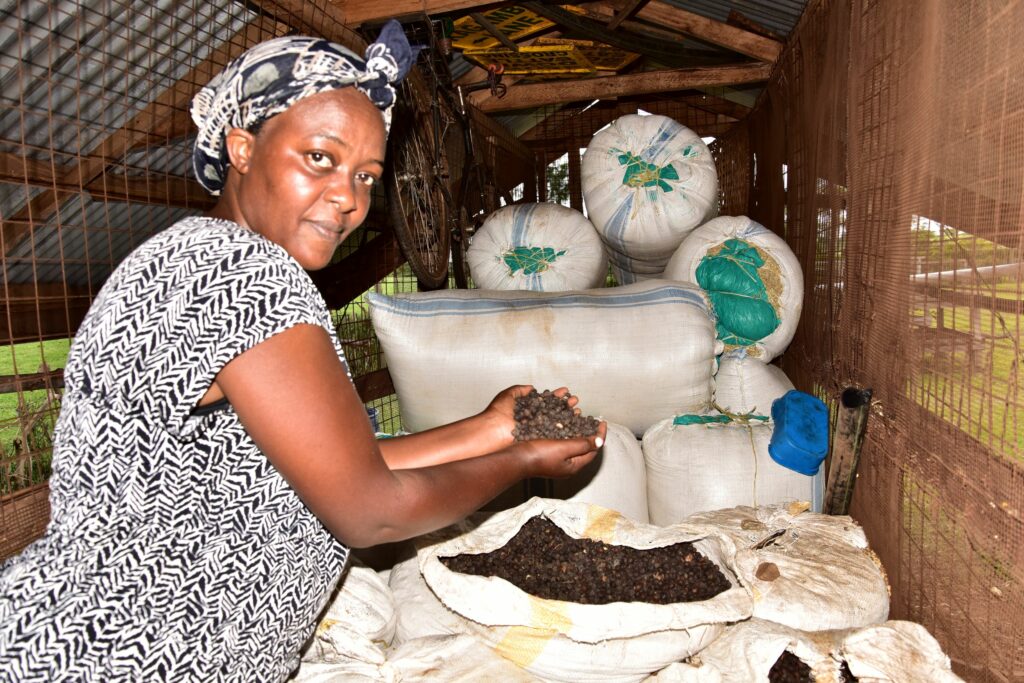
Nutrition
Kagambe says animals need to be fed and watered with products of suitable quality and safety.
“I always secure feed and water supplies from sustainable sources; I plan a head to ensure that the herd’s feed requirements are met. Rotational or paddock grazing system is used at the farm. The cattle are moved between pastures as and when needed. This allows me to better manage forage in a pasture for a long term,” she said.
However, it requires more labour to maintain the paddocks. She considered landscape, forage, livestock, water and fence. “I also planned to have enough water during dry seasons so I constructed a water reservoir dam of 9 million litres Water is also stored in tanks (60,000ltrs) and flows by gravity to paddocks and home stead,” she says.
Treatment
Strongly built cattle crush is used at the farm to hold big, heavy and strong animals during periodically spraying and animal treatment against ticks, flies and other parasites.
Goat farming
Kagambe says goats supply different products like meat, manure and skin. “The first goat stock was the small East African breed. This breed was upgraded by mating female local goats with a pure South African Boer goat and later a South African Savannah breed,” she says.
All her goats are identified with tags, she says animal identification is necessary for records, registration, and proof of ownership at the farm. Every goat born is tagged in 2 weeks period.
Her goats are housed in a shed in order to protect them from adverse climate conditions like rain, sun and wind, predators and thieves.
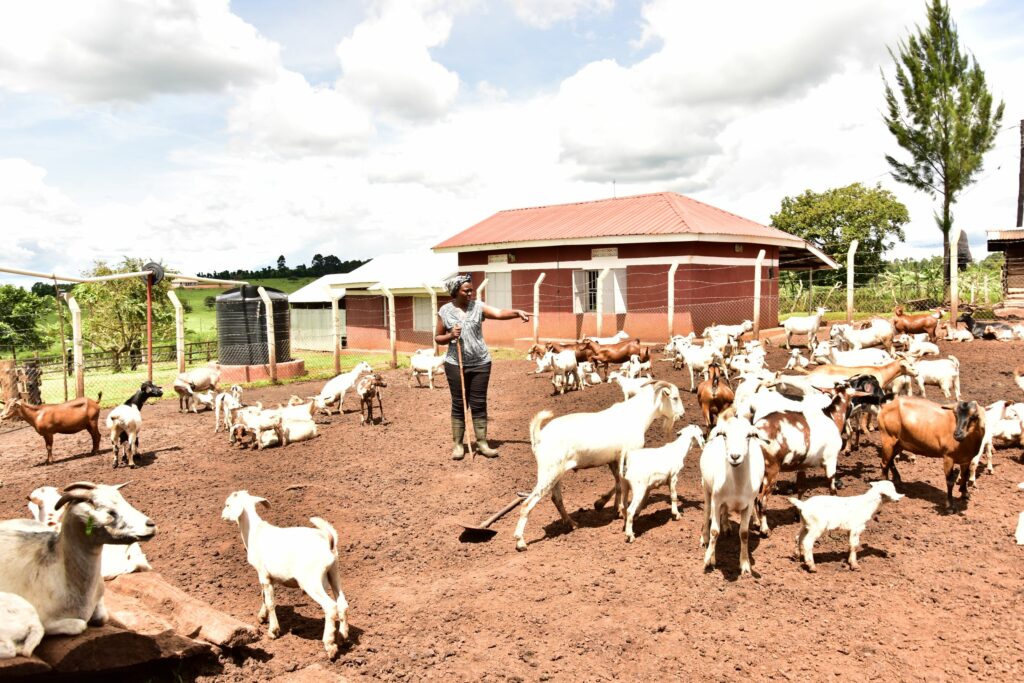
Management of does (female) and bucks (male)
Kagambe says proper care of both female and male goats is taken as an essential aspect of goat production, this includes vaccinations, dosing, feeding, selection of breeding stock, kid rearing and weaning.
Kagambe says young females are mated from age of 12 months, its important flocks to get clean drinking water about 5 litres per goat per day.
Weaning is done when the kids are hundred days old on average and weighing between 8-12 kilograms. According to Kagambe the most common weaning method in goats is complete separation of the kids and the does.
Castration is regularly done to improve the quality of meat by reducing the characteristic smell of the entire male. There are three main methods of castration used in goats, rubber ring, knife/razor and burdizzo.
She sells her young goats at sh200,000 but the old ones at sh350,000 for the savannah cross breeds.
Coffee banana farming
With coffee-banana intercropping Kagambe sought it as a climate-smart agricultural practice to be used. “It has increased income, and she grows only Arabic coffee”, she says.
Kagambe says her bananas are planted 3 metres between rows and 5 metres within rows. The coffees are planted 3 metres between rows and 1.5 metres within rows.
“I sell bananas between sh10,000 and sh15,000, sometimes sh15,000 and sh20,000, depending on seasons”.
According to Kagambe coffee can last for one’s entire lifetime, if a farmer adopts the best farming practices.
She says a farmer has to pay attention to issues like site selection, land preparation, windbreaks, crop spacing and seedling selection for a long time.
“I have over 10,000 coffee trees translating into over 5850kgs of coffee per season”,
As a result, she earns at least a net income of sh40m from a single season’s sales after all expenses are offset. This has enabled her to fund her children by providing them with basic needs such as school fees in expensive schools, medication, clothing and shelter.
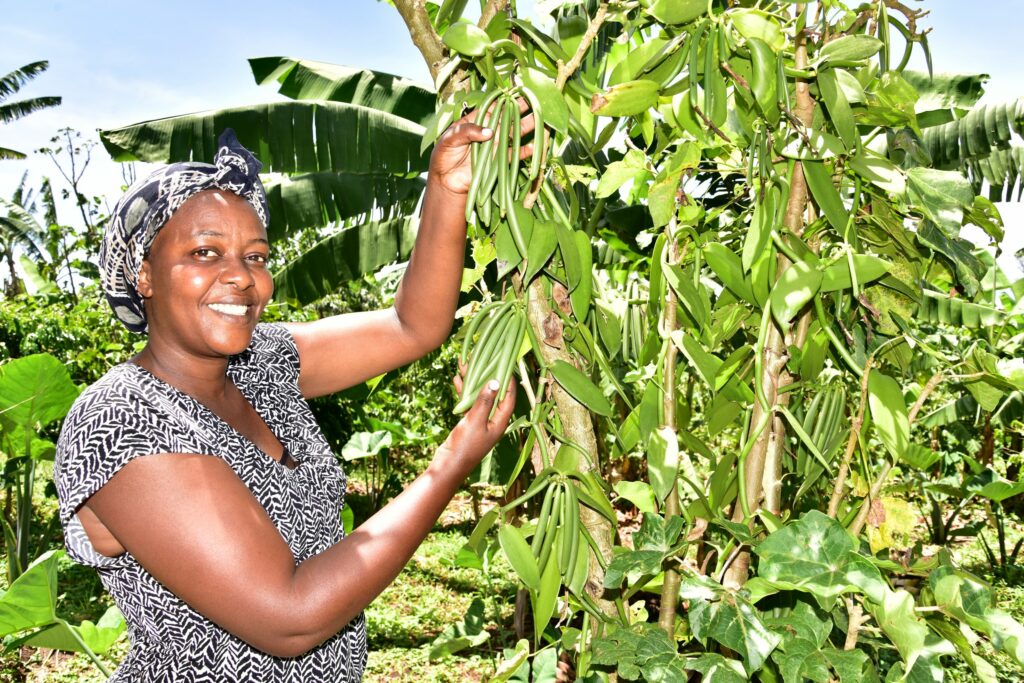
Vanilla growing
“I got interested inVanilla because of its price, and yet few farmers grow this plant, I have 2 acres, I harvest vanilla beans as soon as the tips begin to turn yellow and this will happen approximately 8-9 months after pollination,” she says.
Best harvesting practices include ‘sweating’ and then drying. “Sweating involves wrapping the vanilla beans in a blanket for 36-48 hours until the beans start to develop a light brown colour”, she explains.
Kagambe planted, 1,500 plants of vanilla and she sells a kilo at sh30,000 sometimes it goes up to sh35,000.
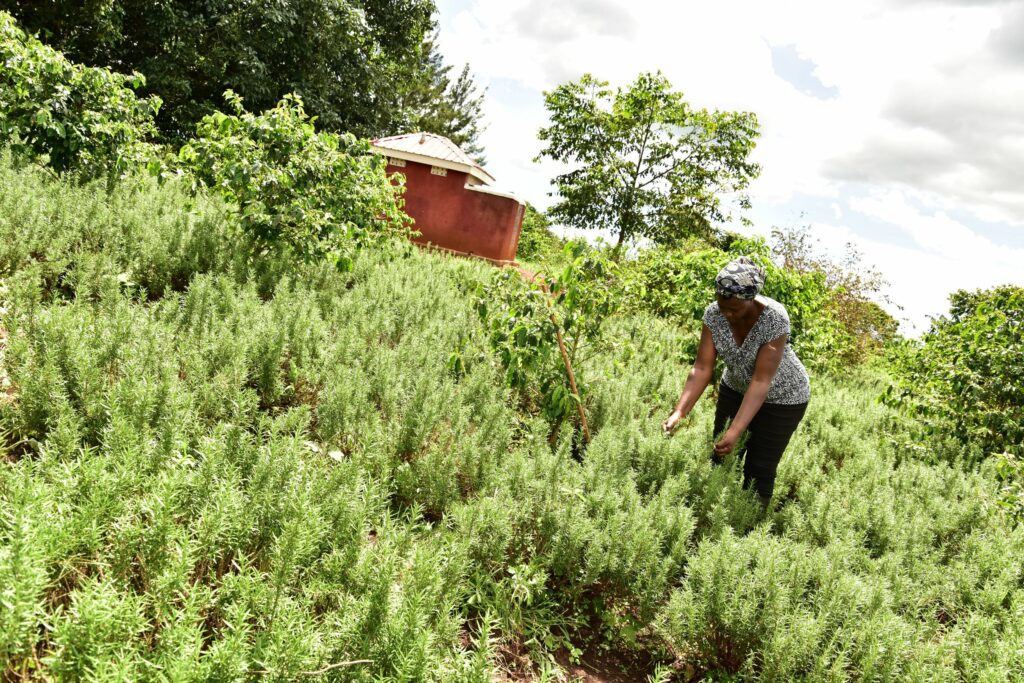
Rosemary
Rosemary is also another enterprise at the farm and it sits on one and half acres. She says, that many people enjoy rosemary tea for its flavor, aroma, and health benefits.
When I realised that when I take time on the value addition, I started to pack and sale, so I dry and sale the dried leaves that can be put in tea or as a spice in sauce, especially meat. Many people love to use it rice and salads, it has a bitter, astringent taste and has a lovely smell.
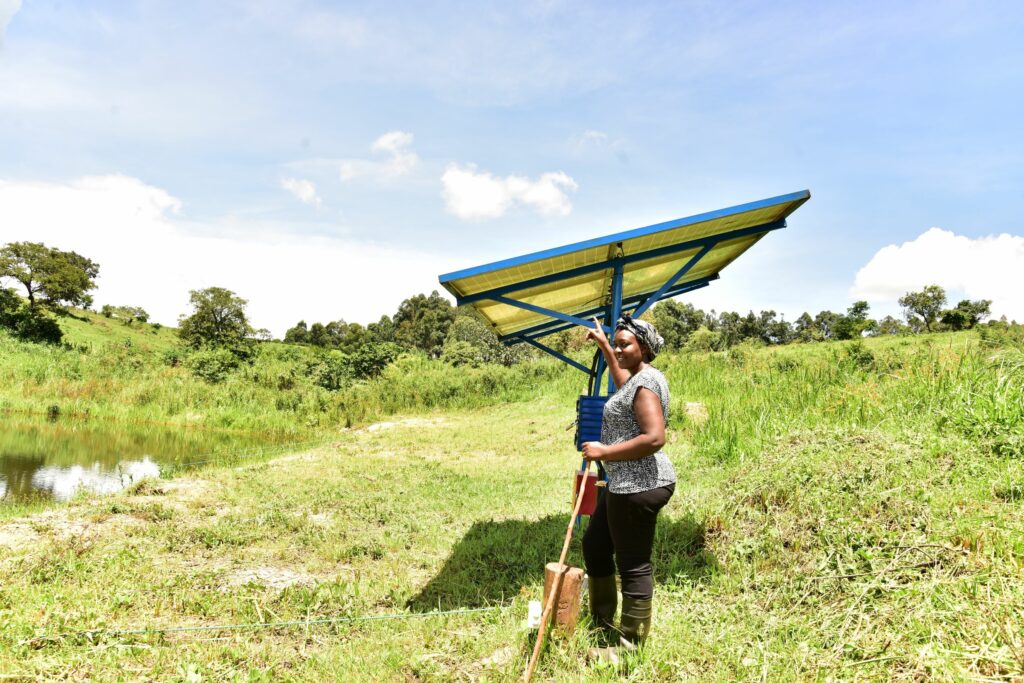
Irrigation at the farm
Kagambe says by applying her experience from commercial farmers on her farm, she has witnessed first-hand why farmers must embrace irrigation. “I have invested about sh30m in construction of 9 million litres water dam with also a help from the government of Uganda. My farm has two dams and tanks to cover all the projects. I was lucky because I already had water in the area, so my major expense was in acquiring sprinklers and installing lines across the farm, which I did,” she says.
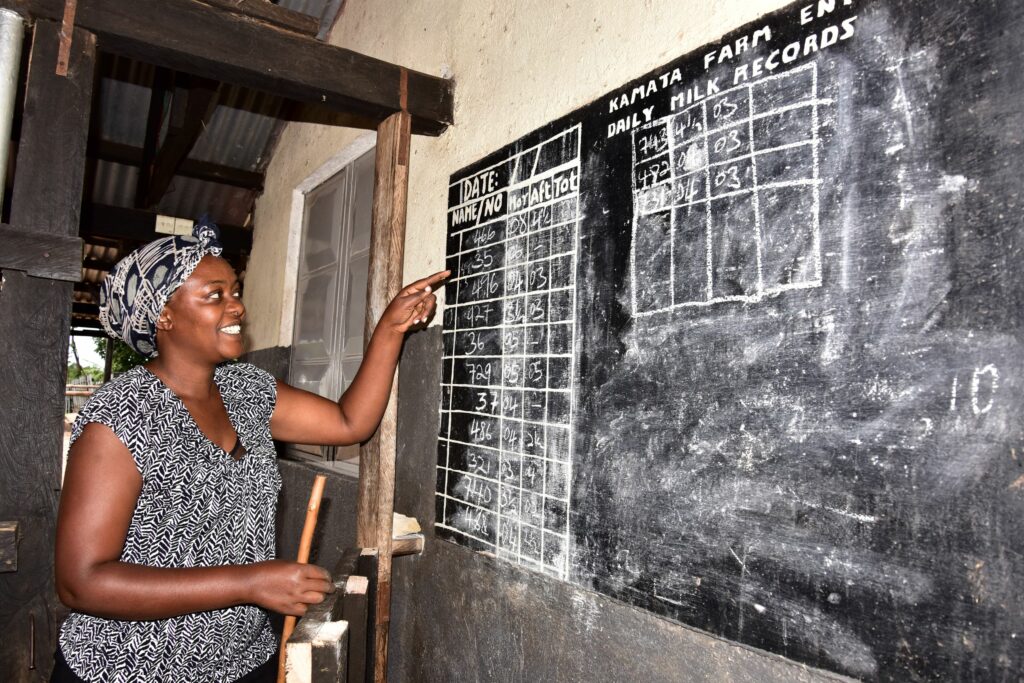
Book keeping
To run the farm effectively, Kagambe says book keeping is paramount because it helps one to know how much they are investing in the project and how much they are getting. “I have a manager Akugizibwe Isaya assisted by Donazio Byamugisha who ensures that any activity that runs on the farm is recorded and every day I get a report and final report every month,” she explains.
I involve my family, most especially when my children are in holidays, my husband is always busy but when he is around he also helps.
Climate-smart practices
“I use organic manure from cow and goat dung . It is free of chemicals and that way, I protect the environment”, she says. This manure contains adequate amounts of the nutrients that plants need for optimal growth, she emphasized. As urine collects in goat droppings, the manure retains more nitrogen, thus increasing its fertilizing potency. Using goat manure in coffee, vanilla and banana gardens areas has been one of the best ways to enrich the soil.
Kagambe has invested enough structure for hay storage. She says that a hay barn offer an effective storage solution that helps keep her animal hay dry and nutritious. The quality of hay can be easily affected. As soon as it is cut, hay starts to lose its nutritious value and it can be badly affected by moisture, temperature and time she noted.
According to Kagambe, during the rainy season grass is always available for the animals to feed on. However, during dry seasons there is barely any grass. I researched on how best to feed cows in the dry lands and learnt about hay and silage.
Community impact
Agnes Ajuna, a resident, says Kagambe is a farmer who does not withhold information. She encourages people to seek knowledge and succeed. Through training, she helps other farmers to get knowledge.
A number of other groups of farmers visit the farm to learn and share their experiences. Kagambe says her farm occasionally organises free training on dairy production and silage making for interested farmers in the community.
“My farm has empowered the community leaders by providing them with improved land to grow their own produce, I just tell them to work on my farm once in a week and with this we make an agreement with them.
Keron Byamukama, a secondary student says, Kagambe pays her school fees and supports her with the necessary school needs.
Kamata Farm has inspired many other people in the area to keep dairy cows. “We have opened up our farm to the community because we do not want to be the only farmer here,” she says
She says combining efforts in agriculture has many advantages, because it exposes farmers to new knowledge and better markets.
She visited farms in Kenya, where farmers do not only earn from the produce, but also from people who visit the farms. This is what she plans to expand.
Plans
“I see a very wide path for me, because it has been 10 years without anything like a bank loan. Her next plan is to get a tractor. I urge the government of Uganda to support me by acquiring a tractor for farming that can be used for plowing, cultivating the soil, planting fields, moving or spreading fertilizer, and lawn maintenance. She plans to buy a lorry that she will use to transport her produce and construct a farm training centre.
Achievements
Kagambe says having to build a farm from scratch to the best standards is her biggest achievement. “I had a dream of training people about the best agricultural practices and today I have a training space. I have met many farmers in Uganda and this has inspired me.
I have tried to fence off the all farm, and this at least has stopped thieves.
Innovations
According to Kagambe, the entire value addition enterprise has a labour force of six permanent workers and 40 casual workers. However, her heart has always gone out to the youth, who constitute 98% of her direct labour force.
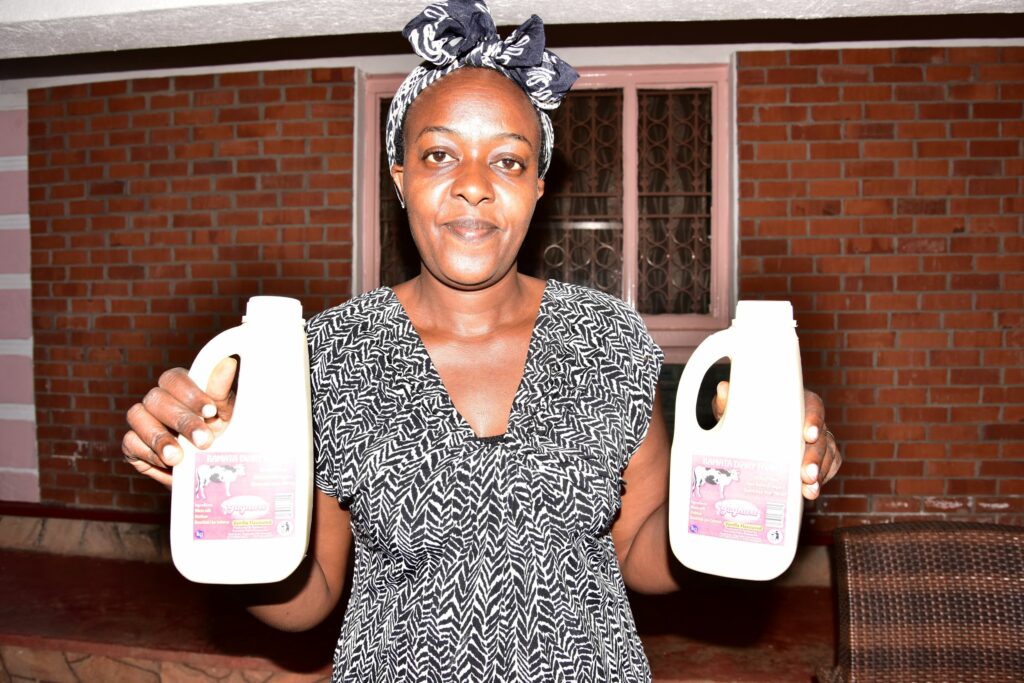
Value additional
According to Kagambe there is no doubt that value addition improves earnings. She says that compared to when she was selling her milk raw at sh1,200 a litre, she can now process 10 litres of yoghurt from the same litre, of which each is being sold at sh5,500.
She also says there is a big difference in selling raw milk and processed yoghurt. “And my focus is to produce more of these than selling raw milk”.
Kagambe also decided to package her yoghurt in small quantities to easily tap into the young people who don’t have a lot of money. They can afford sh1,000 to purchase a cup.
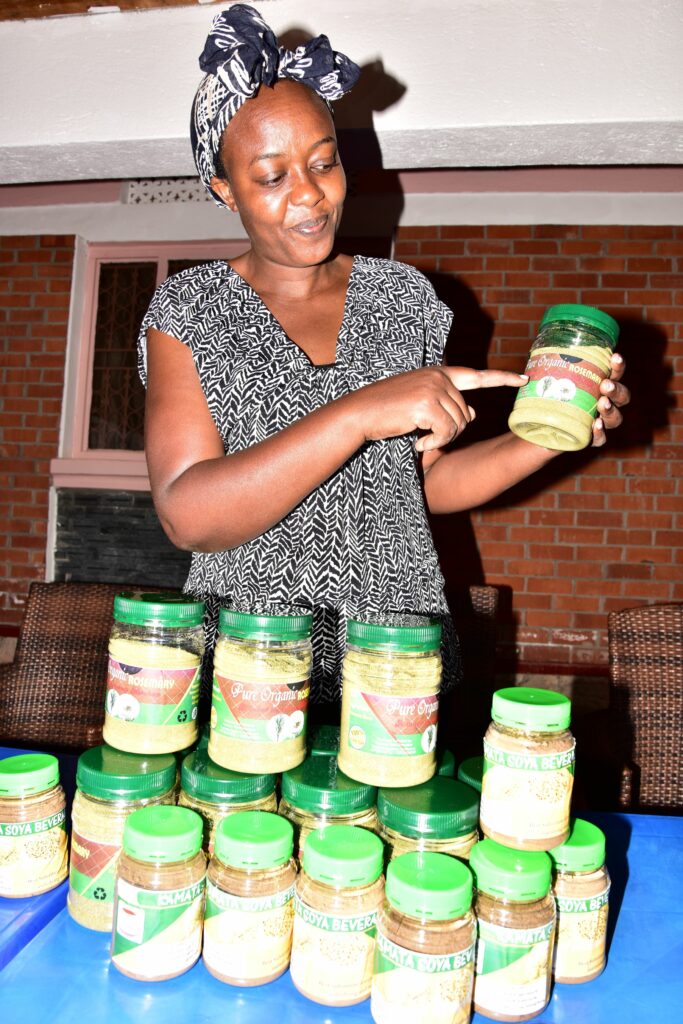
What others says
Donazio Byamugisha assistant manager
Kagambe is a blessing to many of us. She is not mean with her knowledge. She has hosted us so many times on her farm, training us in better organic practices.
Professor Edmond Kagambe the husband
My wife Phoebe Kagambe is a hardworking and determined wife She embraced the idea of a commercial farmer with both hands, she has now helped train many other farmers in commercial organic farming.
Background
Kagambe 41, went to Kibiito Primary School, joined Kyebambe Girls SSS for 0’ level and Namirembe Hillside for A’level. After she joined Makerere University where she attained a Bachelor’s Degree in Arts majoring in organisations studies, later acquired Master’s Degree in Counselling Psychology from Uganda Martyrs University.
Plans
“I see a very wide path for me, because it has been 10 years without anything like a loan
Her next plan is to get a lorry that she will use to transport her produce and construct a farm, a training centre.
Challenges
“One of the biggest challenges, are roads, lack of mechanization, like here I really need a tractor, I request the Government to construct and maintain roads in our area, this also affects the market of our products”, she says
Kagambe also says getting stable farm labour. “Workers are rarely committed to the farm. The top managers must be on the farm most of the time to keep a close eye and monitoring, but after trainings they leave,” she says.
Kagambe also says the weather predictions is also a challenge.
Learning and helping from other farmers I believe in working together with other farmers. This helps me a lot to improve on my products because they some who know more and don’t give others’ ideas





